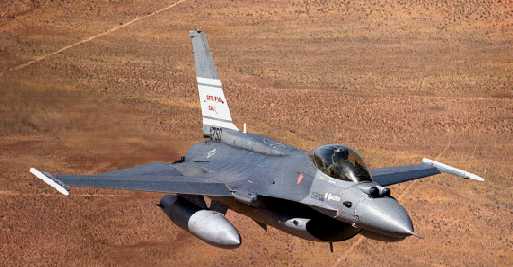

If so instructed by your teacher, print out a worksheet page for these problems.
Beginner's Guide to Aerodynamics is a "textbook" of information prepared at NASA Glenn Research Center to help you better understand aerodynamics. Click Beginner's Guide Index to access the list of slides. Open the slide called Aircraft Motion (with text) and read the explanation on Newton's Second Law and how it applies to the motion of an airplane. Then using the information shown at Aircraft Motion Problems, complete the problems designed to demonstrate your ability to complete calculations involving the motion of an airplane.
- What is the smallest
angle in degrees between the lift and drag forces?
(a) 0o (b) 90o (c) 180o (d) 270o (e) 360o
- What is the smallest
angle in degrees between the weight and lift forces?
(a) 0o (b) 90o (c) 180o (d) 270o (e) 360o
- What is the smallest
angle in degrees between the thrust and drag forces?
(a) 0o (b) 90o (c) 180o (d) 270o (e) 360o
- What is the smallest
angle in degrees between the weight and thrust forces?
(a) 0o (b) 90o (c) 180o (d) 270o (e) 360o
- When an airplane (or
any object) is moving at a constant speed, the forces acting on the airplane
must be
(a) unbalanced, which means that the total force is not zero
(b) balanced, which means that the total force is zero

A fighter jet is flying at 37,000 feet with a constant speed of 1,310 km/h. The jet has a weight of 110,000 N and its engines provide a thrust of 106,752 N (using afterburners).
- What is the jet's height
(altitude) in meters?

(a) 1.13 x 108 m (b) 61,248 m (c) 8,679 m (d) 356 m (e) 11,277.6 m - What is the jet's mass?
[Hint: Use F = mag = W, where ag = 9.8
m/s2.]
(a) 520,120 kg (b) 11,224.49 kg (c) 3,527 kg (d) 614,853 kg (e) 215 kg
- How much lift force
is being applied to the jet?
(a) 512,128 N (b) 5,634 N (c) 110,000 N (d) 9,935 N (e) 106,752 N
- If the jet engines
are creating a thrust of 106,752 N, what is the drag force applied to the
jet?
(a) 512,128 N (b) 5,634 N (c) 110,000 N (d) 9,935 N (e) 106,752 N
Suppose the jet engines are providing a thrust of 100,102 N while the drag force is only 90,167 N.
- What is the total unbalanced
(or net) force on the jet?
(a) 512,128 N (b) 5,634 N (c) 110,000 N (d) 9,935 N (e) 106,752 N
- What will be the jet's
acceleration?
(a) 0.89 m/s2 (b) 4.35 m/s2 (c) 0.36 m/s2 (d) 4,253 m/s2 (e) 65.3 m/s2
- If the jet is cruising
at 223.47 m/s and accelerates at 0.25 m/s2 for 1,530 seconds,
what is the jet's final speed?
(a) 401.28 m/s (b) 605.97 m/s (c) 731.67 m/s (d) 634,521.6 m/s (e) 3,452 m/s
- Using the data from
the previous problem, calculate how far the jet traveled while it accelerated
during the 1,530 seconds.
(a) 401.28 m (b) 605.97 m (c) 731.67 m (d) 634,521.6 m (e) 3,452 m
- If the jet cruised
at a speed of 1,310 km/h for 2.53 hours, how far did it travel?
(a) 517.79 km (b) 4,639.00 km (c) 218.42 km (d) 6,547.23 km (e) 3,314.30 km
EDUCATOR RESOURCES | AERONAUTIC EDUCATIONAL RESOURCES | INTERNET ACCESS RESEARCH | ICING RESEARCH TUNNEL
BEGINNER'S GUIDE TO AERONAUTICS | FREE SOFTWARE | AERODYNAMICS INFORMATION | AERODYNAMICS PROBLEMS | PROPULSION INFORMATION |
PROPULSION PROBLEMS | FOILSIM INFORMATION | FOILSIM PROBLEMS | ENGINESIM INFORMATION | ENGINESIM PROBLEMS | ROCKETMODELER
AERONAUTICS LESSONS & ACTIVITIES | WIND TUNNEL WEB PAGES | AERONAUTS 2000 | VIDEOCONFERENCES WITH THE U.K.
Curator: Tom.Benson@grc.nasa.gov
Responsible Official: Kathy.Zona@grc.nasa.gov